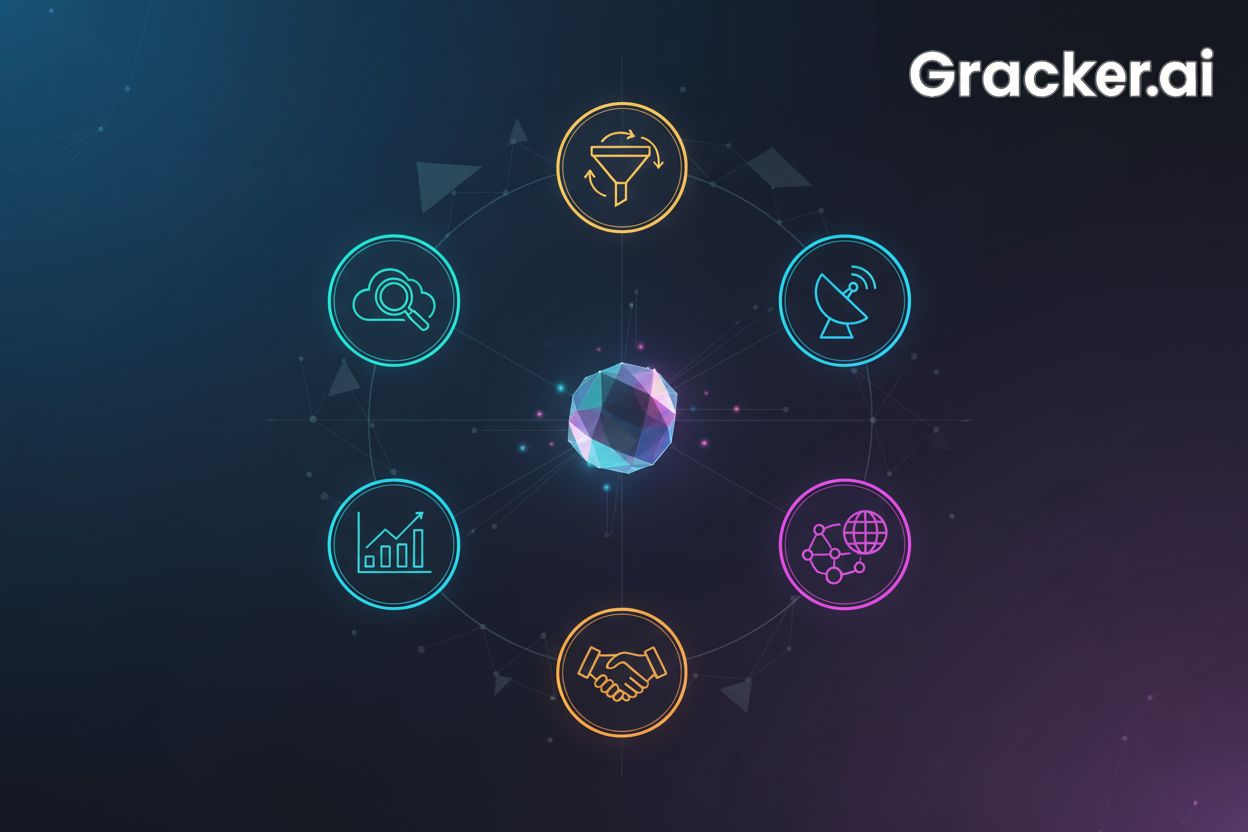What is Growth Hacking and How Can You Master It?
TL;DR
Understanding the Core of Growth Hacking
Growth hacking: is it just the latest marketing buzzword, or is there actually something to it? Honestly, I was skeptical at first too, but after seeing some of the results, I'm starting to think it's worth digging into.
So what's the deal? Growth hacking is all about finding those scalable strategies that really move the needle. It's not just about running a few ads or posting on social media (though those things can be part of it). It's more about a different way of thinking.
Here's what it boils down to:
- Experimentation is key. Growth hackers are constantly trying new things, and not afraid to fail. (What Is Growth Hacking and How is It Different From Traditional ...) Think of it like A/B testing on steroids. For instance, a healthcare startup might test different onboarding flows to see which one leads to the highest patient activation rate.
- Data-driven decisions. Everything is tracked and measured. (What Are You Measuring In Your Life? - James Clear) No more gut feelings – it's about what the data says. A retail business might analyze customer purchase patterns to identify cross-selling opportunities.
- Unconventional methods. Growth hackers are always looking for new and creative ways to reach customers. Think outside the box! A finance company might partner with non-profits to reach new audiences. This is unconventional because finance companies typically focus on direct financial services, not community outreach. Partnering with non-profits allows them to tap into a new, often highly engaged audience that might not be actively seeking financial services, while simultaneously building significant brand goodwill and demonstrating social responsibility. This can lead to organic growth through positive association and word-of-mouth from a community that feels genuinely supported.
Growth hacking is a mindset. It's about a continuous loop of ideation, testing, and analysis. It's about finding innovative ways to grow your business, even if that means doing things that haven't been done before.
Growth Hacking vs. Traditional Marketing: The Big Differences
Now, let's talk about how growth hacking stacks up against traditional marketing, because there are some pretty big differences. Traditional marketing often focuses on broad reach, brand building over longer periods, and established channels like TV ads, print, and large-scale digital campaigns. It's about casting a wide net and hoping for the best, with a focus on long-term brand equity.
Growth hacking, on the other hand, is laser-focused on rapid, scalable growth. It's less about building a brand image and more about finding specific, often unconventional, tactics that drive measurable user acquisition, activation, retention, and revenue. Think of it as a sprint with a very specific finish line – growth. While traditional marketing might spend big on a Super Bowl ad, a growth hacker might spend that same budget on running hundreds of micro-experiments to find the most cost-effective way to acquire a single new customer. It's about agility, iteration, and a relentless pursuit of what works right now to grow.
Essential Skills and Mindset for Growth Hackers
Ever wonder what it really takes to be a growth hacker? It's not just about knowing the latest marketing trends. It's a mix of skills and, honestly, a certain way of seeing the world.
You don't need to be a coding ninja, but some basic coding knowledge can be super helpful. Think of it as being able to tweak the system yourself instead of always relying on someone else. Knowing your way around html, css, and maybe a little javascript can seriously speed things up. It lets you customize tools, implement those clever growth hacks you come up with, and generally not be blocked by tech limitations all the time.
Ever heard of apis? They're basically the glue that holds the internet together, allowing different platforms to talk to each other. A growth hacker who understands how to use apis can automate tasks, pull data from different sources, and create some truly innovative solutions. For instance, automating personalized welcome messages to new users, or pull data from multiple sources to create a single dashboard view.
Time is precious, and growth hackers are always looking for ways to do more with less. That's where automation tools like Zapier or ifttt comes in handy. These let you connect different apps and services to automate tasks, like posting to social media, sending email newsletters, or even updating your CRM. It's all about finding those repetitive tasks that can be automated, freeing up your time to focus on the bigger picture.
So, what's next? Let's talk about creative problem-solving – because that's where the real magic happens.
Creative Problem-Solving: The Heart of Growth Hacking
So, what's next? Let's talk about creative problem-solving – because that's where the real magic happens. Growth hacking isn't just about following a playbook; it's about looking at a challenge – like low user engagement or a stagnant conversion rate – and finding a completely novel way to tackle it. It's about asking "what if?" and not being afraid to explore the weird, the unexpected, and the seemingly impossible.
This means looking beyond the obvious solutions. If your sign-up rate is low, instead of just tweaking the button color (which is fine, but often incremental), a growth hacker might brainstorm ways to gamify the sign-up process, partner with an influencer to create a viral challenge that requires sign-ups, or even develop a free, highly valuable tool that requires an email to access. It's about reframing the problem and then using your skills – technical, analytical, and creative – to engineer a solution that bypasses traditional barriers and directly drives growth. It's the ability to connect seemingly unrelated dots and build something new and effective from them.
Growth Hacking Strategies and Tactics
Alright, let's dive into referral programs and virality. Ever wonder why some products just explode in popularity while others, well, don't? A lot of it boils down to how well they tap into our natural desire to share cool stuff with our friends.
Referral programs are basically structured word-of-mouth. You give people a reason to tell their friends about your product and reward them when they do. It's that simple, really.
- Incentivize Sharing: The key is making the reward compelling. Think discounts, free upgrades, or even exclusive content. For example, a cybersecurity SaaS company might offer a free month of their premium service for every successful referral, increasing adoption and stickiness.
- Make it Easy: If you make people jump through hoops to refer, they won't bother. Integrate social sharing directly into your app or website. One-click sharing to LinkedIn or X can seriously boost your reach.
- Track Everything: Gotta know what's working and what isn't. Which referral channels are the most effective? What incentives are driving the most sign-ups? Data is your friend.
Virality is like lightning in a bottle. You can't force it, but you can create the conditions for it to happen.
- Tap into Emotions: Viral content often evokes strong emotions – joy, surprise, anger, even disgust (in the right context, of course!). Think about those super-shareable videos that make you tear up or laugh out loud. Evoking disgust, for example, can be incredibly powerful in campaigns that aim to highlight a problem or a negative consequence, like anti-smoking ads or campaigns against environmental pollution. The shock value and visceral reaction can make the message unforgettable and highly shareable, prompting discussion and action. It's about creating a strong, memorable reaction that people feel compelled to share or discuss.
- Create a Unique Experience: Give people something they can't get anywhere else. Maybe it's a quirky quiz, an interactive tool, or a mind-blowing infographic.
- Ride the Trends: Keep an eye on what's hot and find ways to inject your brand into the conversation. Just don't force it – authenticity is key.
Next up, let's explore more growth-generating methods that you can start using today.
Additional Growth-Generating Methods to Try
Next up, let's explore more growth-generating methods that you can start using today. Beyond referrals and virality, there's a whole toolbox of tactics to consider.
- Content Marketing with a Twist: Instead of just blogging, think about creating interactive tools, calculators, or free mini-courses that solve a specific problem for your target audience. These can be highly shareable and attract leads organically. For example, a real estate agency could create a "dream home budget calculator" that requires an email to access.
- Strategic Partnerships: Look for complementary businesses that serve a similar audience but don't directly compete. You can cross-promote, bundle offers, or co-create content. A fitness app could partner with a healthy meal delivery service for a joint promotion.
- Community Building: Foster a sense of belonging around your brand. This could be a dedicated forum, a Slack group, or even just an active presence in relevant online communities. Engaged communities lead to loyal customers and powerful word-of-mouth.
- Leverage User-Generated Content (UGC): Encourage your users to create and share content related to your product or service. Run contests, feature user testimonials prominently, or create branded hashtags. UGC builds trust and authenticity.
Mastering Growth Hacking: A Step-by-Step Approach
Okay, so you're looking to master growth hacking? It ain't magic, but it needs a solid plan, and a willingness to get your hands dirty. Think of it like this: you're trying to crack a safe, and every experiment is a different tool.
Here's a few things you gotta do:
- Set clear goals: What do you really want to achieve? More users? Higher retention? A finance app, for instance, might aim for a 20% increase in monthly active users in Q3.
- Define key metrics: What are you measuring? Conversion rates, churn rates – gotta track it all. A retail business might focus on increasing average order value by 15%.
- Set Realistic Goals: Don't try to boil the ocean, alright? Focus on achievable milestones that build momentum.
Now, you're gonna try a lot of stuff. Some will bomb, that's just how it goes. But you gotta learn from the failures and tweak your approach. Like, a healthcare startup might try different onboarding flows to see which one gets patients using the app more.
And finally, keep records, you know? What worked? What didn't? This'll save you a ton of time later. Next, let's talk about the awesome GrackerAI.
Introducing GrackerAI
Next, let's talk about the awesome GrackerAI. Now, this isn't some generic AI tool you've probably seen a million of. GrackerAI is specifically designed with growth hackers in mind. Think of it as your AI co-pilot for finding and executing growth strategies.
What makes it cool? Well, it's built to analyze vast amounts of data to identify patterns and predict potential growth opportunities that a human might miss. It can help you brainstorm campaign ideas, optimize ad copy, identify untapped customer segments, and even automate certain testing processes. It's not about replacing the growth hacker, but about augmenting their capabilities, allowing them to move faster and make more informed decisions. It's like having a super-smart assistant who's constantly crunching numbers and suggesting the next big move.
Ethical Considerations in Growth Hacking
Growth hacking, huh? It's not all sunshine and rainbows. There's a definite ethical tightrope you gotta walk. I mean, are you really helping users or just tricking 'em?
First thing's first: transparency. Don't hide what you're doing. If you're collecting data, make it obvious. No one likes finding out they've been duped.
- Be upfront about data collection. A lot of companies aren't. If you need their email, explain why and what you'll use it for.
- Comply with regulations. GDPR, CCPA – you know the drill. It's not just good ethics; it's the law.
- Avoid deceptive tactics. No dark patterns! Don't trick people into signing up for stuff they don't want. According to YouTube, being transparent about your policies is key to building trust- and they should know!
It's about respect, really. Treat users how you'd want to be treated. Growth is great, but not at the expense of someone's privacy or trust.
What's next, then? Let's look at the future of growth hacking.
The Future of Growth Hacking
What's next, then? Let's look at the future of growth hacking. It's not going anywhere, but it's definitely evolving. As more companies adopt growth hacking principles, the landscape will become more competitive. This means growth hackers will need to be even more creative and resourceful.
We'll likely see a greater integration of ai and machine learning, like GrackerAI, becoming standard tools for analysis and prediction. Personalization will become even more sophisticated, moving beyond basic segmentation to hyper-individualized experiences. Expect more focus on community-driven growth and leveraging the power of decentralized networks. The core principles – experimentation, data, and a relentless focus on growth – will remain, but the methods will continue to adapt to new technologies and user behaviors. It's going to be an exciting ride.
Real-World Growth Hacking Examples
Growth hacking success stories? There everywhere, honestly. It's about spotting opportunities others miss, and executing like crazy.
Dropbox: Remember when they gave extra storage for referrals? Super simple, but it blew up their user base. It wasn't just free stuff; it tapped into peoples need to share.
Airbnb: Smart move. They automated postings to Craigslist, which gave 'em a huge, free boost in traffic back when Craigslist was king. Kinda sneaky—definitely effective.
Hotmail: Remember their signature line: "Get Your Free Email at Hotmail"? Every email sent became and ad. Simple, but brilliant.
Think about a retail business using ai to personalize product recommendations based on browsing history. Or a finance company teaming up with a non-profit to reach new audiences.
Growth hacking isn't magic, but it is a mindset. It's about constant experimentation and using data to drive decisions. Don't be afraid to try new things and, frankly, to fail sometimes. It's all part of the process.







